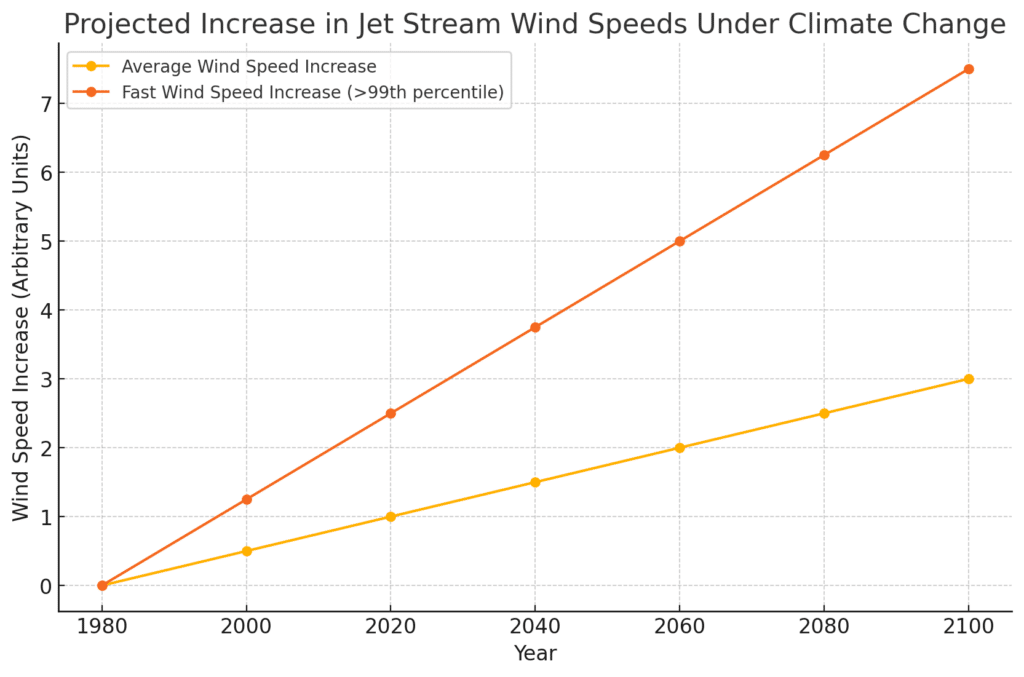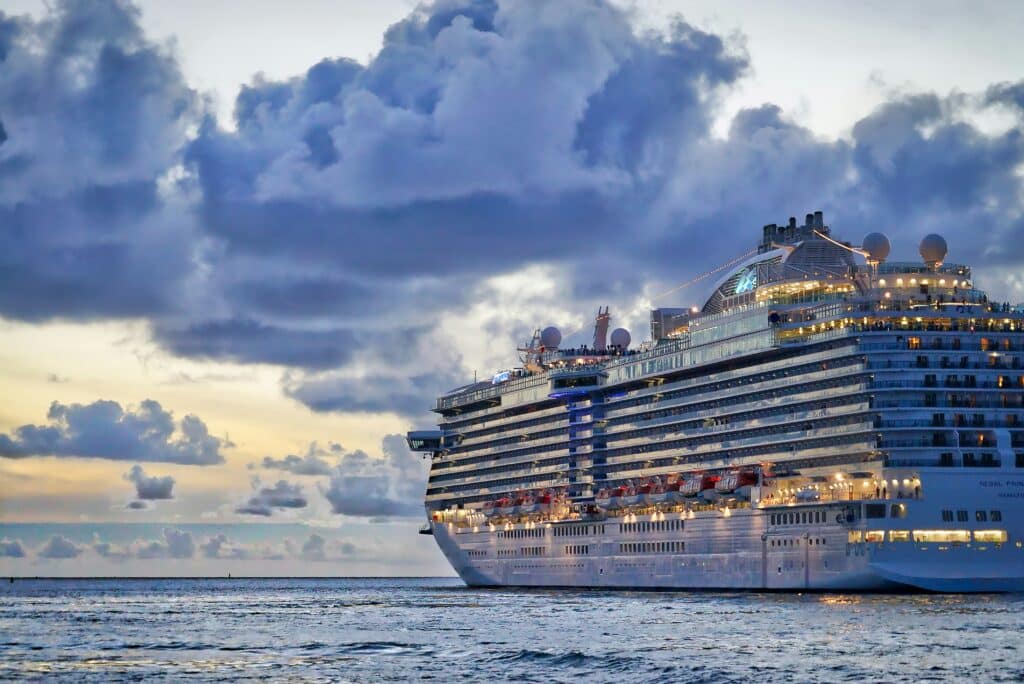Have you ever been on a flight where the plane suddenly starts shaking, even though the weather looks clear? This unexpected shaking is called clear-air turbulence (CAT).
It happens without any warning because it isn’t visible on radar. And guess what? Climate change is making this turbulence more common. Recently, we’ve seen the impacts of this kind of turbulence on Singapore Airlines flight SQ321. Let’s dive into how and why this is happening and what it means for our flights.
What is Clear Air Turbulence?
Clear-air turbulence happens when there are strong changes in wind speed or direction at high altitudes, usually where jet streams are located. Jet streams are fast-flowing air currents high up in the atmosphere that can affect the weather and the path planes take.
When a plane flies through these changes, it can feel like the plane is bouncing around in the air. According to Reuters, flight SQ321 quickly ascended 1664 feet per minute before descending 1536 feet per minute in a matter of 3 seconds, which went on for at least a minute.

How Climate Change Affects Jet Streams
Climate change is causing temperatures around the world to rise. According to Tiffany Shaw and Osamu Miyawaki, professor at The University of Chicago Department of Geophysical Sciences and Director of Climate & Global Dynamics Laboratory respectively, this warming affects the atmosphere and changes the behavior of jet streams. The key points to understand are:
- Jet Streams Are Getting Stronger: As the Earth warms, the difference in temperature between the equator and the poles increases. This makes the jet streams stronger.
- Faster Winds: The fastest winds in these jet streams are getting even faster. This is because warmer air can hold more moisture, which changes how air moves and speeds up the winds.

Why Does This Increase Clear-Air Turbulence?
As the jet streams get stronger and faster, they create more areas where the wind changes speed or direction suddenly. These changes are what cause clear-air turbulence. So, the stronger and faster the jet streams, the more turbulence there is.
Impact on Commercial Flights
- More Turbulence: With stronger and faster jet streams, planes are more likely to encounter turbulence, even when the sky looks clear. New research from the University of Reading shows that clear-air turbulence has increased significantly over the years:
- Severe Turbulence: Increased by 55% since 1979.
- Moderate Turbulence: Increased by 37%.
- Light Turbulence: Increased by 17%.
- Longer Flights: Pilots might have to take longer routes to avoid these turbulent areas, which can increase flight times.
- Increased Fuel Use: Longer flights mean planes use more fuel, which can make flights more expensive and contribute to more greenhouse gas emissions.
- Passenger Safety: More turbulence can make flights bumpier, which can be uncomfortable or even dangerous if passengers or crew are not seated or buckled up.
When Will These Changes Happen?
According to the research by Shaw and Miyawaki, the increase in fast jet stream winds and clear-air turbulence is expected to become more and more noticeable by 2050. This means we might start seeing more of these impacts within the next 25 to 30 years. However, some changes could be noticed even sooner, especially with stronger winds and more frequent turbulence affecting flights gradually over time.

- Average Wind Speed Increase: This line shows how the average speed of jet stream winds increases over time.
- Fast Wind Speed Increase: This line shows how the fastest winds in the jet stream (the top 1%) are increasing even more rapidly.
More Findings from Europe
Research by Tommaso Alberti at the National Institute of Geophysics and Volcanology highlights how climate change is affecting turbulence over Europe :
- UK and Northern Europe: There is an increase in severe turbulence, making these regions more vulnerable.
- Central and Mediterranean Europe: These areas are experiencing a decrease in light turbulence.

Research Insights from China
In addition to the information from Europe and the University of Reading, research from China gives us more understanding of how climate change is affecting turbulence and flights. This study looks at how rain forms and how turbulence happens using detailed flight data.
Key Findings:
- Data Collection:
- The study used data from a project that observed clouds closely. They used a special tool to measure the size and spread of cloud droplets.
- Turbulence Mechanisms:
- Researchers found that tiny spinning air currents inside clouds make droplets move and collide more often. This helps form rain faster and creates more turbulence.
- Impact on Turbulence:
- The distance between droplets changes in different parts of the cloud, affecting turbulence strength. Bigger droplets fall faster, leading to stronger turbulence in certain conditions.
- Modeling and Predictions:
- Using this data, researchers improved weather models to predict turbulence more accurately. These models show stronger turbulence in areas with closely packed droplets, especially in the middle of clouds with strong updrafts.
Why is Turbulence Worse Over Beijing?
The study noted that turbulence over Beijing is more severe compared to surrounding areas. Several factors contribute to this:
- Urban Heat Island Effect:
- Beijing is a large city that is warmer than nearby rural areas. This extra heat causes unstable air and stronger updrafts, leading to more turbulence.
- Geographical Features:
- The mountains near Beijing disrupt the flow of air, creating turbulent air movements.
- Air Pollution:
- High levels of pollution in Beijing affect how heat is spread in the atmosphere, which can lead to more turbulence.
- Converging Weather Systems:
- Weather systems often meet around Beijing, creating more turbulent conditions.
These factors make Beijing a hotspot for severe turbulence compared to nearby areas.
Implications for Aviation:
The findings from China show that detailed data is important for understanding and predicting turbulence. This research helps improve flight planning models, reducing the risks of clear-air turbulence. As turbulence becomes more common and intense due to climate change, such studies are crucial for making flying safer and more efficient.
What Can We Do?
While we can’t stop the turbulence itself, understanding it can help. Airlines can use this information to plan safer and more efficient routes. Scientists are working on better weather models to predict when and where clear-air turbulence will happen.
Climate change is making the skies bumpier by increasing clear-air turbulence. The situation with flight SQ321 serves more as a warning rather than an expectation. Prior to this incident, there hadn’t been a death due to air turbulence in over 25 years. In fact, according to IATA, 2023 was the safest year in aviation history. The rise in turbulence could affect our flights in the future by making them longer, more expensive, and sometimes more uncomfortable.
At Chima Travel, we look at these trends to best understand travel and offer support to our clients. By understanding these changes, we can better prepare for safer and smoother air travel in the future. So next time you feel a bump on your flight, you’ll know a bit more about why it’s happening and what we’re doing to keep flying safe.










